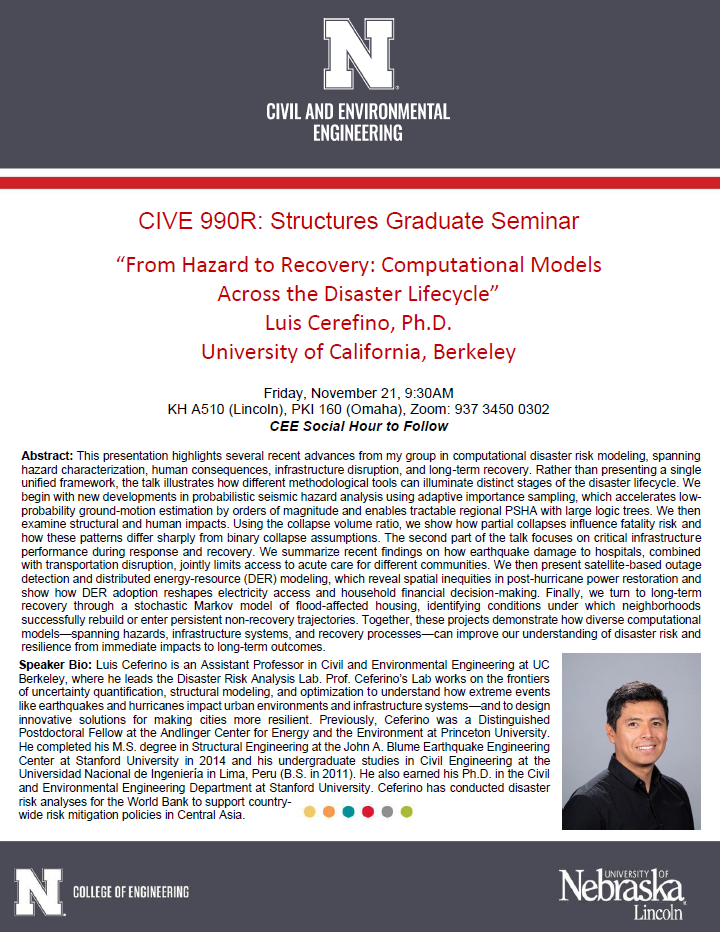
Speaker: Luis Cerefino, Ph.D., University of California, Berkeley
When: Friday, November 21st, 9:30AM
Where: KH A510 (Lincoln), PKI 160 (Omaha)
Zoom: 937 3450 0302
Title: From Hazard to Recovery: Computational Models Across the Disaster Lifecycle
Abstract: This presentation highlights several recent advances from my group in computational disaster risk modeling, spanning hazard characterization, human consequences, infrastructure disruption, and long-term recovery. Rather than presenting a single unified framework, the talk illustrates how different methodological tools can illuminate distinct stages of the disaster lifecycle. We begin with new developments in probabilistic seismic hazard analysis using adaptive importance sampling, which accelerates low-probability ground-motion estimation by orders of magnitude and enables tractable regional PSHA with large logic trees. We then examine structural and human impacts. Using the collapse volume ratio, we show how partial collapses influence fatality risk and how these patterns differ sharply from binary collapse assumptions. The second part of the talk focuses on critical infrastructure performance during response and recovery. We summarize recent findings on how earthquake damage to hospitals, combined with transportation disruption, jointly limits access to acute care for different communities. We then present satellite-based outage detection and distributed energy-resource (DER) modeling, which reveal spatial inequities in post-hurricane power restoration and show how DER adoption reshapes electricity access and household financial decision-making. Finally, we turn to long-term recovery through a stochastic Markov model of flood-affected housing, identifying conditions under which neighborhoods successfully rebuild or enter persistent non-recovery trajectories. Together, these projects demonstrate how diverse computational models—spanning hazards, infrastructure systems, and recovery processes—can improve our understanding of disaster risk and resilience from immediate impacts to long-term outcomes